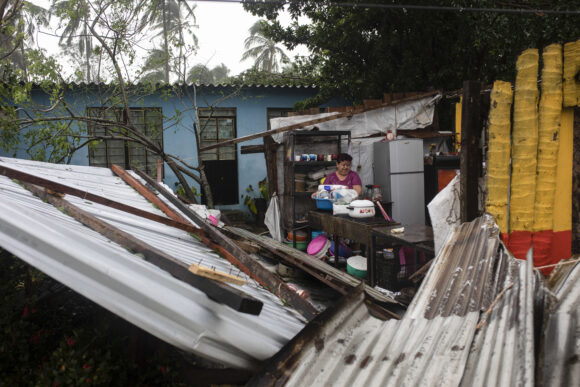Insured losses to onshore properties from Hurricane Grace will amount to $330 million, catastrophe risk modeler Karen Clark & Co. said Thursday.
KCC said $300 million of those damages occurred in Mexico and $30 million in the Caribbean.
Grace made landfall in Guadeloupe and Montserrat on Aug. 14 with 40 mph maximum sustained winds, Haiti and the Dominican Republic on August 16 with 35 mph maximum sustained winds, and Jamaica on August 17 with 50 mph maximum sustained winds, KCC said in a press release.
Grace crossed the Caribbean and made two landfalls in Mexico: near Tulum with 80 mph maximum sustained winds on August 19 and near Tecolutla with maximum sustained winds of 125 mph on Aug. 21.
KCC said the storm had a minimal impact on the Yucatan Peninsula, with the majority of damage resulting from downed trees. Central Mexico experienced more significant damage, including structural damage to coastal structures when Category 3 winds came ashore.
The National Hurricane Center began tracking Grace on Aug. 13 as it approached the Lesser Antilles as Potential Tropical Cyclone Seven. Warm sea temperatures and decreasing wind shear allowed the storm to intensify and emerge as a tropical storm on Aug. 14.
A high pressure system prevented Grace from turning north. The storm tracked westward and passed south of Puerto Rico on Aug. 15, losing some of its intensity. Grace passed over the Barahona Peninsula in the Dominican Republic and skimmed the southern coast of Haiti. Once over open seas, Grace regained strength and struck the northern coast of Jamaica as a tropical storm.
On Aug. 19, Grace made the first Mexico landfall along the Yucatan Peninsula as a Category 1 hurricane. The storm weakened but regained strength when it reemerged over the Bay of Campeche on August 20.
Unexpected rapid intensification occurred just before Grace made landfall on August 21, and the hurricane moved onshore in Veracruz with maximum intensity of 125 mph, KCC said. After landfall, quick weakening occurred, and Grace became a tropical storm the same morning. The storm dissipated while over central Mexico that afternoon.
Low-level wind damage in the Caribbean was isolated to Jamaica and the Cayman Islands, KCC said. There was some damage to non-structural building components such as roof coverings in the Cayman Islands.
In Mexico, Category 1 wind speeds in the Yucatan Peninsula resulted in widespread low-level wind damage. Downed trees, however, contributed to power outages to nearly 700,000 customers and caused scattered structural damage, KCC said.
The Category 3 winds that struck Central Mexico, however, resulted in extensive damage near the coast. KCC said the region experiences fewer hurricanes than the Yucatan Peninsula and buildings are more vulnerable to wind damage.
In addition to high winds, Grace produced significant precipitation in eastern and central Mexico, which saturated soils and overwhelmed drainage networks. Landslides also contributed to infrastructure disruption, making roadways impassable, and caused damage to some residential buildings.
About the photo: A woman begins clearing debris from her kitchen after a part of her home was damaged by winds brought on by Hurricane Grace, in Tecolutla, Veracruz State, Mexico, Saturday, Aug. 21, 2021. Grace hit Mexico’s Gulf shore as a major Category 3 storm before weakening on Saturday, drenching coastal and inland areas in its second landfall in the country in two days. (AP Photo/Felix Marquez)
Was this article valuable?
Here are more articles you may enjoy.


 LA Fires Push Insurers’ 2025 Disaster Losses to $107 Billion
LA Fires Push Insurers’ 2025 Disaster Losses to $107 Billion  Wells Fargo Sued by Ex-Manager Who Said Bank Faked Diversity
Wells Fargo Sued by Ex-Manager Who Said Bank Faked Diversity  Tesla Drivers Are Buying Escape Tools and Cars to Avoid Getting Trapped Inside
Tesla Drivers Are Buying Escape Tools and Cars to Avoid Getting Trapped Inside  J&J Talc Jury Awards $1.56 Billion to Asbestos Cancer Victim
J&J Talc Jury Awards $1.56 Billion to Asbestos Cancer Victim 